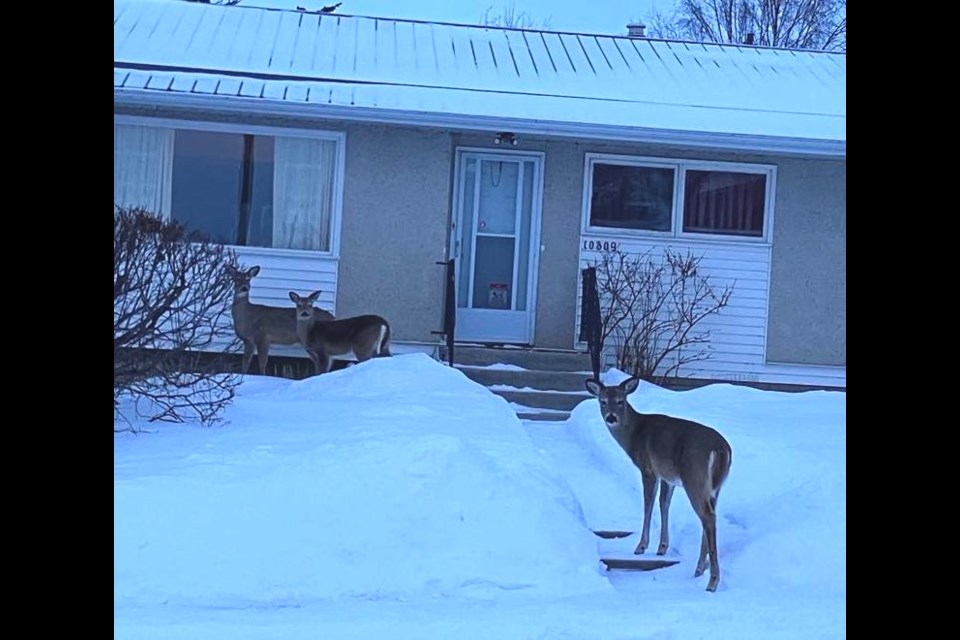LAKELAND – In response to several sightings in the area of deer getting up close and personal with residential areas in the area, Lakeland This Week reached out to Alberta Public Safety and Emergency Services to provide tips on how the public can safely live with wildlife venturing nearby.
During the winter months, people living in communities in the Lakeland region may find themselves sharing the road – and even their own front yard - with deer who have made their way into town from nearby wilderness areas.
According to Sheena S. Campbell, director of communications at Alberta Public Safety and Emergency Services, these wild animals are a common sight in Lakeland communities throughout the winter as they search for their next meal.
“Since they don't hibernate, they actively seek food during colder months, often venturing into residential areas where food and shelter are more accessible,” Campbell told Lakeland This Week.
Campbell explained that Fish and Wildlife officers do receive complaints about deer, particularly when they damage property, pose safety concerns to the public, or become aggressive during seasonal behavioural patterns. While these incidences do occur, she confirmed that aggressive incidents involving deer are rare.
When deer move around in areas where they are likely to have interactions with people, key safety concerns come into play, including vehicle collisions, particularly during October and November and again in April and May when these animals are more active, said Campbell.
Female deer can be defensive during the fawning season in May and June, while bucks may display aggression during mating season, which typically takes place in November.
Campbell said residents are encouraged to keep pets and children away from deer and avoid feeding them, as an increase in deer can attract more predators.
When they receive complaints about wildlife, Fish and Wildlife officers assess each situation to ensure both public safety and animal welfare.
“In most cases, deer are encouraged to leave the area naturally. Relocation or euthanasia is only considered when a deer poses a significant threat or is severely injured,” she said.




